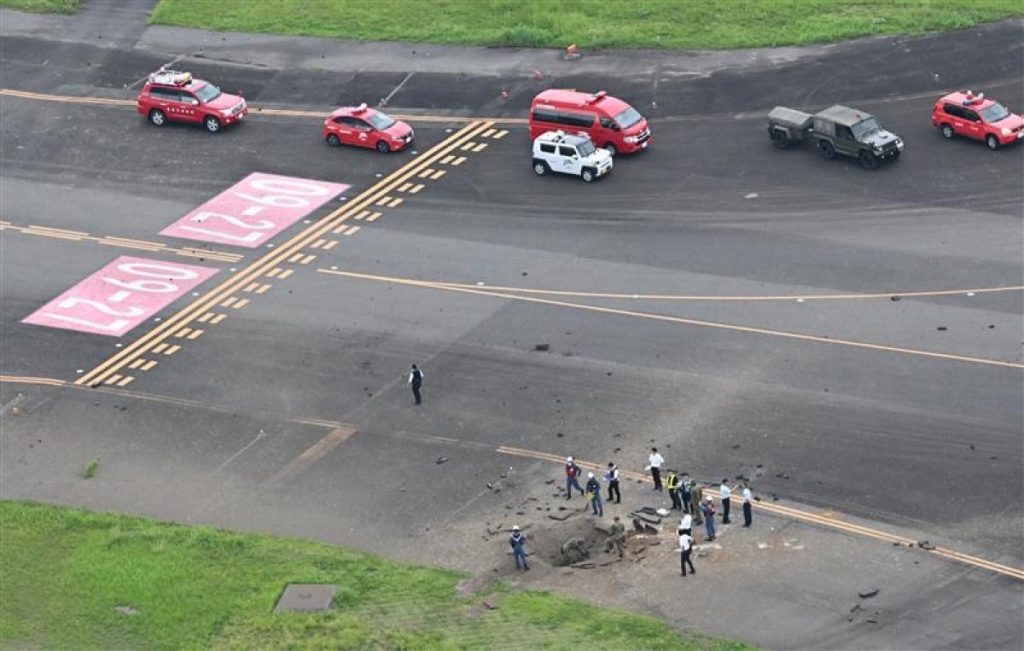Miyazaki Airport in southern Japan reopened on Thursday after an unexploded World War II bomb detonated, just under a minute after a passenger jet taxied past.
Originally established in 1943 as a base for the Imperial Japanese Navy, the airport was historically used to launch kamikaze aircraft on suicide missions. Footage from the scene captured a massive plume of earth, shooting at least 10 metres (30 feet) into the air, near a taxiway.
The explosion created a hole in the tarmac a few metres wide, occurring shortly after an aircraft passed the location. Fortunately, there were no reported injuries; however, the blast led to the cancellation of dozens of flights on Wednesday, affecting more than 3,400 passengers.
The Japanese Self-Defense Forces (SDF) dispatched a bomb disposal team, which identified the device as a US-made 250-kilogram (550-pound) bomb. This incident marks a continuation of historical findings, as unexploded ordnance has been discovered at the airport in previous years—specifically, in 2021 and 2011, as well as at a nearby construction site in 2009.
In the years leading up to the atomic bombings of Nagasaki and Hiroshima in 1945, the US Air Force heavily bombed various Japanese cities, resulting in the deaths of hundreds of thousands of civilians, including approximately 100,000 in Tokyo during a single night raid in March 1945.
From April 2023 to April 2024, the SDF safely disposed of 2,348 unexploded devices, with 441 located in Okinawa, a region that experienced intense conflict during the war. Estimates suggest that over 1,800 tonnes of unexploded munitions still litter Okinawa, most of which are US bombs from World War II, alongside remnants from the Japanese military.

